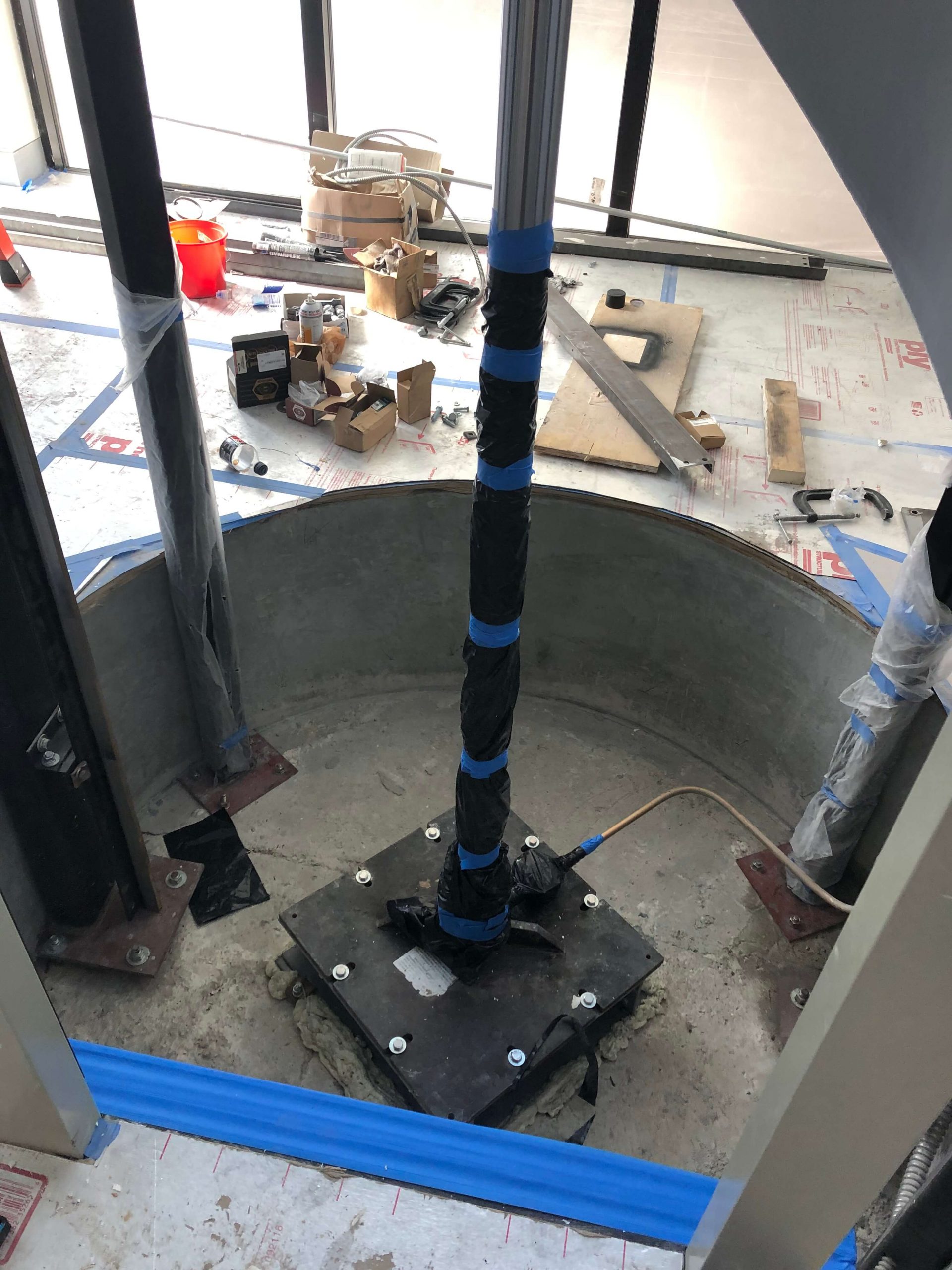Whether you’re choosing between hydraulic vs. traction elevators to have installed in your home or for your business, there are vital differences between the two that can impact your decision. Both types of elevators can be a great choice, but it will depend on things like the height of your building, the weight requirements, and many other factors.
Keep reading for some important information to guide your decision.
Differences between hydraulic and traction elevators
The major difference between traction and hydraulic lifts is how the system transports the elevator cab.
Are you interested in learning some fun facts about elevator history? Have a look at this.
In a traction elevator, counterweight offsets the weight of the cab and its occupants. The motor doesn’t have to move as much weight which means traction elevators are much more energy-efficient than hydraulic systems.
Traction elevators can be geared or gearless. Geared traction elevators have a gearbox that’s attached to the motor. It drives the wheel and moves the ropes. These machines can reach speeds up to 500 ft./min and are slightly less energy-efficient than gearless elevators.
Gearless traction elevators have a sheave that’s attached directly to the end of the motor, and they can reach speeds up to 2,000 ft./min.
Traction elevators are raised and lowered by steel ropes or belts on a pulley system, unlike hydraulic elevators which lift a cab by using a fluid-driven piston that’s mounted inside of a cylinder.
To recap, traction elevators can be geared or gearless. Similarly, hydraulic elevators can be holed or holeless. In a holed hydraulic elevator, hydraulic cylinders are placed inside of a drilled hole and allow for up to 60’ of travel.
Holeless hydraulic elevators, on the other hand, don’t need a drilled hole. That means they’re ideal for existing buildings or when drilling would be too difficult or expensive. They shouldn’t be installed if more than 40’ of travel is required.
Now that we know about the differences between hydraulic and traction elevators, let’s discuss some of their advantages and disadvantages. You can also learn a lot more about elevators in this blog post where we discuss some FAQs about elevators.
Traction versus hydraulic lifts: advantages and disadvantages
Generally speaking, hydraulic elevators are the quickest to install and they’re less expensive to install and maintain. They can often accommodate heavier weight, and above-ground models are available with or without machine rooms. No crane or roof access is required, and they have lower pit and overhead requirements with standard travel than traction elevators.
However, they do have some potential disadvantages as well. For starters, they use more energy, and they can only accommodate low to mid-rise buildings.
Traction elevators can pose several advantages. As we mentioned, they’re usually more energy-efficient, and can be used in high-rise buildings. They tend to offer a quieter and smoother ride, as well as a smaller motor and less spacious control room requirements.
On the other hand, they are more expensive to install and tend to take longer. They typically add 4-6 weeks on a project schedule, and a crane is usually required for installation. Traction elevators also have some cab weight and capacity limitations that hydraulic elevators do not.
Which commercial elevator is better, traction or hydraulic?
Are traction elevators or hydraulic elevators better in commercial buildings? It’s a question we get a lot from our customers, so we’ll help break down the topic.
For starters, it will depend on your space requirements. In some cases, hydraulic elevators take up less room than traction elevators since they can have the control room installed at the top of the shaft. Even modern traction elevators that are machine roomless will tend to take up more room than hydraulic elevators.
Depending on the height of your building, your decision may be made for you. For high-rise buildings, a traction elevator could be the only option. But for low to mid-rise buildings up to five stories, hydraulic elevators could be more cost-effective and efficient. Keep in mind, they are slower than traction elevators.
It will also depend on how much weight your elevator needs to transport. For heavier loads, hydraulic elevators could be the preferred choice.
When you’re installing a commercial elevator or lift, there are several accessibility considerations you’ll need to have in mind. Since the 1990s, the Americans with Disabilities Act (ADA) has an established standard for the installation of elevators in commercial buildings. Learn more about this and other accessibility information for commercial elevators here.
What about residential elevators?
A hydraulic elevator might be the right choice for a residential elevator considering they tend to take up less space. In most homes, a residential elevator will only need to cover a few floors, which hydraulic elevators are ideal for. And again, they are usually installed in a much smaller time frame, which means less disruption to your regular life.
If energy costs are a consideration, traction elevators tend to be more energy-efficient which may help offset the additional cost it takes to install them.
Pneumatic vacuum elevators are a modern elevator design that is also found in homes. They don’t require cables, chains, pistons, or counterweights, but instead use the hoistway as part of the lifting system. They’re made with a tube-shaped cab that fits perfectly into a tube-shaped hoistway. This perfect fit is necessary to maintain precise atmospheric pressures above and below the cab. When pressure is reduced above the cab, this causes it to rise and fill the void. To lower, a control valve slowly releases pressure, and this creates a cushion of air beneath the cab.
We know this is a lot to think about! In South Florida, Rise Above Elevator is the premier elevator company to not only help you make these decisions, but to install and service your elevator for years to come! Contact us today so we can get started.



